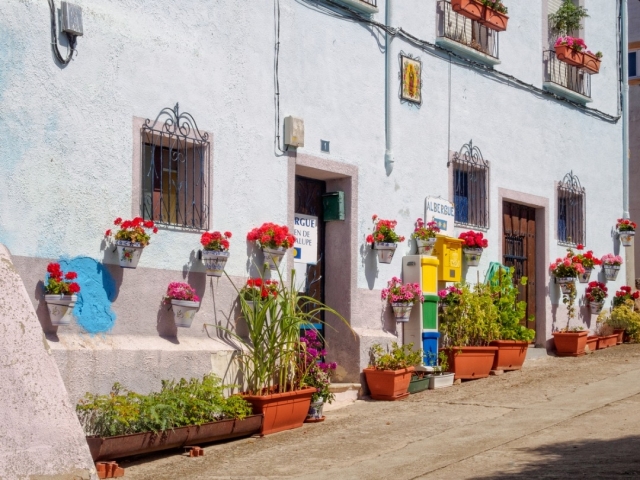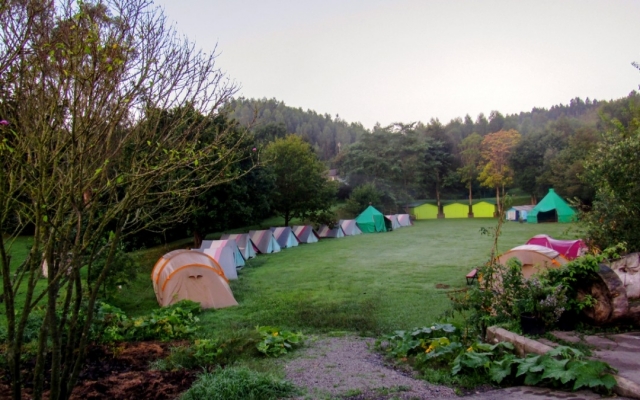What measures have the shelters taken to make the Camino de Santiago safer after COVID-19?
We tell you what are the general and specific protection guidelines that the shelters will take after the Covid-19
After a long period of confinement marked by uncertainty, we began to have news about the de-escalation on the Camino de Santiago. If everything goes well and the current situation evolves as expected, we will soon be able to get back on the road safely. lThe hostels on the Jacobean routes are working hard and following the directions so that the establishments are totally safe for pilgrims.
The Government of Spain and the autonomous communities are already working to establish a sanitary protocol against Covid-19 that will allow the reopening of the shelters in a safe way to avoid contagion by pilgrims. The Institute for Spanish Tourist Quality (ICTE) has shared a guide with measures to reduce contagion by the coronavirus. We share with you a compilation of all these guidelines for the specific case of hostels. We hope that knowing these rules will also serve you as a pilgrim to feel safer in the accommodations if you are going to walk the Camino de Santiago this summer of 2020 (from when the authorities allow travel between provinces).
General guidelines for protection in shelters
Each hostel will design specific security measures for its accommodations, however, they must meet a series of basic rules:
-
Safety distance. The safety distance (1.5 - 2 meters) between employees and customers should always be maintained. The circulation of people will be organized and a redistribution of the spaces will be made. If necessary, a capacity control would be established.
-
Hand washing and individual protection. Staff shifts should be organized to guarantee the safety distance, and individual protection elements such as gloves, masks, etc. will be provided. Finally, it is advisable to wash your hands frequently with soap and water, or also with the use of disinfecting solution.
-
Frequent ventilation and disinfection. The different areas of the hostel will be ventilated whenever possible, along with the correct disinfection throughout the working day of objects for personal use (glasses, mobile ...) and of the elements of the workplace (screen, keyboard ...) . Also, shared use areas such as showers and toilets, and other everyday surfaces such as knobs, faucets, etc. will be cleaned frequently.
Specific guidelines for each area of the hostels
In addition to these general measures, the Institute for Spanish Tourist Quality details specific safety recommendations for each of the areas that the hostels have.
1. Reception and reception
When receiving and welcoming pilgrims in the establishments, a series of guidelines must be followed to protect all workers and each client. Below, we detail how it will be from now on to do it safely.
-
I salute avoiding physical contact.
-
Include disinfection measures in the reception area (disinfectant solution, disinfectant sprayer for shoes, backpacks, etc.). It is also recommended to place disinfecting rugs at the entrance of the shelters.
-
Guarantee the safety distance at all times. If it is not possible, physical elements such as protective partitions should be added or else, use a mask. Regarding the safety distance between clients, visible distance markers will be placed to avoid crowding.
-
Self-checking, card payment and other electronic means will be encouraged to facilitate booking and online checking to avoid unnecessary contacts.
-
Decorative elements, brochures and other printed informational materials will be removed as far as possible. Online information is recommended.
2. Single and shared rooms
As all pilgrims know, it is common to share rooms when the Camino de Santiago is done. Therefore, new rules have been adapted to regulate the correct use and establish security measures, both in individual rooms and in shared rooms.
- Each room will have hydroalcoholic solutions and it is also recommended to install disinfecting rugs at the entrance of each one.
- The space must be reorganized, so that the beds and bunks meet the minimum safety distance, as well as regulating the maximum capacity allowed.
- Sheets and bagged blankets will be provided in the shared rooms, so that the pilgrim will make his own bed and must not touch the beds of other clients.
3. Toilets and showers in common use
As for the toilets and showers in common use, in addition to using all the individual protection measures that were previously used, such as the use of flip flops. From now on, new guidelines will be included to ensure greater security.
- Dispensers with disinfectant solution will be included in all rooms of the hostel, including toilets and showers. Also, individual soap and paper dispensers in all services.
- The use of mats and other similar textile elements will be avoided.
- Appropriate footwear will be used.
- A shift control will be installed to meet the safety distance and avoid crowds.
4. Kitchen and dining room
Other common shared use areas in hostels are the kitchen and dining room. All pilgrims must carry out new hygiene and safety measures in order to keep this space free of any type of contagion. Here we reveal what all these new measures will be:
- The kitchen must be disinfected after each use, so that the disinfection of the equipment and the household items is guaranteed.
- In case of not being able to do it, it must remain closed. As in other rooms, there will be dining room turns to guarantee capacity and safety distance.
- There will be disinfecting gels to facilitate proper hand hygiene.
- The traditional kitchenware will be eliminated and it will be replaced by a disposable one, both the cutlery and the plates and tablecloths.
- Decorative elements, cards, shared menus and other self-service products will be removed from the tables, thus prioritizing single-use disposable pods.
- The use of buffet is not recommended.
5. Shared use areas
The common and shared use areas must be equipped with everything necessary for proper disinfection and to guarantee maximum security. These are some of the new measures that will be established:
- The establishments will have disinfecting solutions in all the places of passage and in the different facilities of use.
- As for the bins, they must have a non-manual opening and have an inner bag.
- All products left by customers in the hostel, would be discarded. Brochures, guides and other objects for shared use should be removed.
- If this is not possible, the hostel staff should inform pilgrims of the correct use, disinfecting their hands before and after their consultation.
- Disinfectant solutions will be installed next to the vending machines.
6. Transportation of backpacks
Finally, the luggage of all pilgrims will remain in disinfected spaces on a frequent basis and also, measures will be established to avoid direct contact with objects stored in shelters.
- If the establishments have a specific area to leave the backpacks, it must be disinfected frequently and have disinfectant solutions.
- Contact with clients' backpacks and other belongings such as boots or poles should be avoided, so plastic bags will be provided for them to deposit their objects inside.
Routes
Blog
 How to get to Sarria to do the Camino de Santiago
How to get to Sarria to do the Camino de Santiago
 Descubre la magia del Camino de Santiago Portugués por la costa
Descubre la magia del Camino de Santiago Portugués por la costa
 5 tours culturales que puedes hacer en Galicia si decides hacer un alto en el camino
5 tours culturales que puedes hacer en Galicia si decides hacer un alto en el camino
 Doing the Camino de Santiago in June: What you should know?
Doing the Camino de Santiago in June: What you should know?
Information
Points of interest
Cities & Towns | Hostels | Lodgings | Restaurants | Saddlery | Doctors | Points of interest | Bikes workshop
Contact us | Privacy policy | Cookies policy | | Terms of use | Authorship | Web Map | Consentimiento
© Copyright LA VOZ DE GALICIA S.A. Polígono de Sabón, Arteixo, A CORUÑA (ESPAÑA) Inscrita en el Registro Mercantil de A Coruña en el Tomo 2438 del Archivo, Sección General, a los folios 91 y siguientes, hoja C-2141. CIF: A-15000649
Developed and managed byHyliacom

